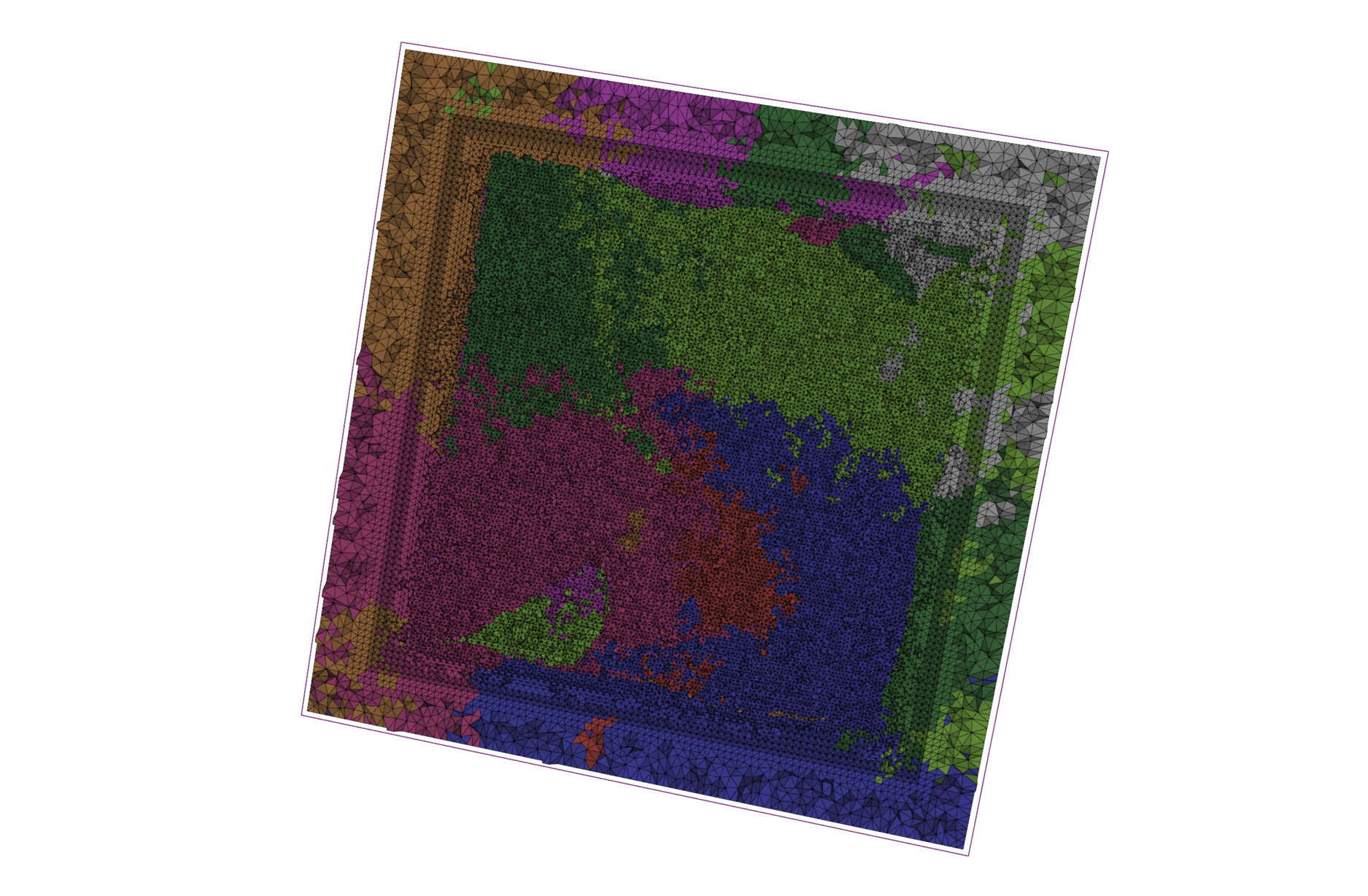Section: New Results
Parallel remeshing
Participants : Cécile Dobrzynski, Cédric Lachat, François Pellegrini [Corresponding member] .
Our studies regarding parallel remeshing use a dedicated software framework called PaMPA (for “Parallel Mesh Partitioning and Adaptation”; see Section 5.6 for more details about it). This software, whose development started three years ago, allow one to describe distributed meshes in an abstract way.
The work carried out this year concerns the definition of suitable algorithms for performing remeshing in parallel, using a sequential remesher. To do so, areas suitable for remeshing (that is, cells for which a quality measurement routine indicates that remeshing is necessary) are grouped into boules of a size small enough to be handled by a sequential remesher, and big enough so that this remesher can do useful work on each of the boules. The core of the work is therefore to identify and build relevant boules, to send them to as many processors as possible, to remesh them sequentially, and to merge the remeshed boules into what remains of the original mesh. Then, areas that have not already been processed (e.g. areas at the interface of two or more boules) can be considered in turn, until all relevant cells have been considered. The structure and operations of PaMPA have been presented in [29] .
Several algorithms have been experimented in order to build the boules. The one which proved the most efficient is based on a partitioning of an induced subgraph of the element graph, using the PT-Scotch tool which is already used for mesh redistribution. PaMPA has been interfaced with MMG3D in order to create a demonstrator for remeshing in parallel tetraedral meshes. A set of tetrahedral cube-shaped test meshes has been created, with a metric that coerces remeshing in the interior of the cubes. PaMPA was able to remesh a 12 million tetrahedral mesh into 18 million tetrahedra on 80 processors, yielding a quality equivalent to the one of the sequential remesher used alone. Scalability experiments on much larger test cases are in progress; yet, their quality will no longer be comparable to a sequential test case. This version of PaMPA will soon be released and made available to the community.



